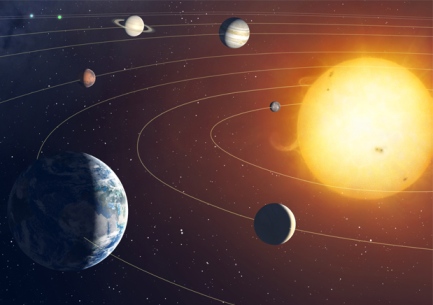Here's how our solar system may have evolved
 Washington, Nov 14 : A new study explored the measurements of magnetic fields trapped in grains within a primitive meteorite that gave important hints to how the early solar system evolved.
Washington, Nov 14 : A new study explored the measurements of magnetic fields trapped in grains within a primitive meteorite that gave important hints to how the early solar system evolved.
The new research showed that measurements point to shock waves traveling through the cloud of dusty gas around the newborn Sun as a major factor in solar system formation.
The lead author of the study is Roger Fu of MIT, who is working under Benjamin Weiss and Steve Desch of Arizona State University's School of Earth and Space Exploration.
According to the study, among the most useful pieces of debris are the oldest, most primitive and least altered type of meteorites, called the chondrites (KON-drites). Chondrite meteorites are pieces of asteroids, broken off by collisions, that have remained relatively unmodified since they formed at the birth of the solar system and they are built mostly of small stony grains, called chondrules, barely a millimeter in diameter.
Chondrules themselves formed through quick melting events in the dusty gas cloud - the solar nebula that surrounded the young sun. Patches of the solar nebula must have been heated above the melting point of rock for hours to days. Dustballs caught in these events made droplets of molten rock, which then cooled and crystallized into chondrules.
The scientists focused specifically on the embedded magnetic fields captured by "dusty" olivine grains that contain abundant iron-bearing minerals. These had a magnetic field of about 54 microtesla, similar to the magnetic field at Earth's surface, which ranges from 25 to 65 microtesla.
Desch explains that his modeling for the heating events showed that shock waves passing through the solar nebula was what melted most chondrules and depending on the strength and size of the shock wave, the background magnetic field could be amplified by up to 30 times.
The study was published in the journal Science. (ANI)
